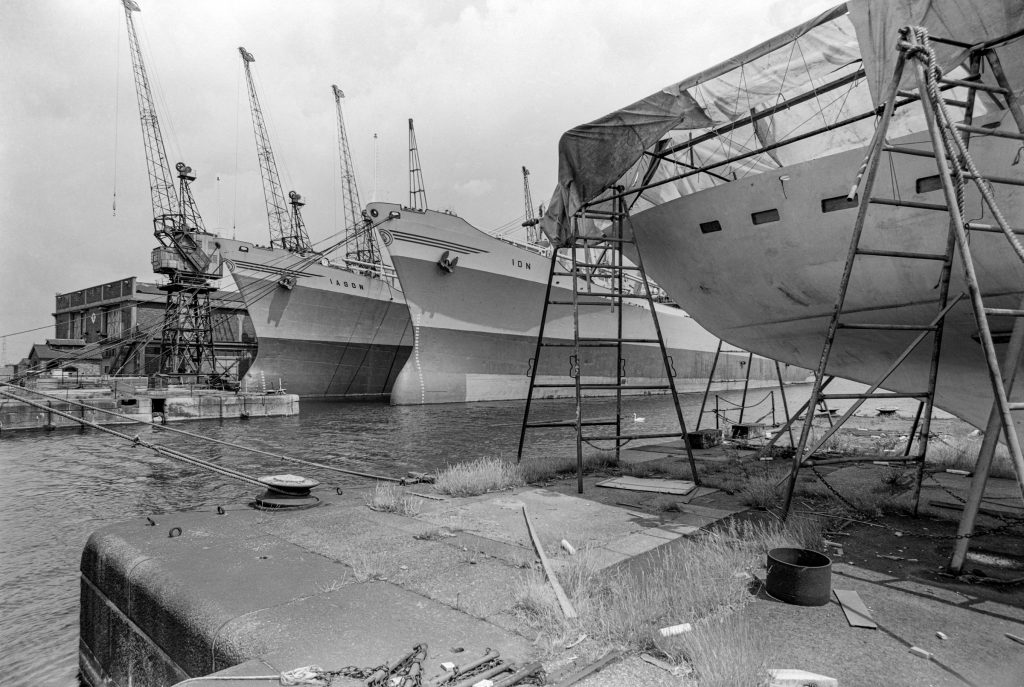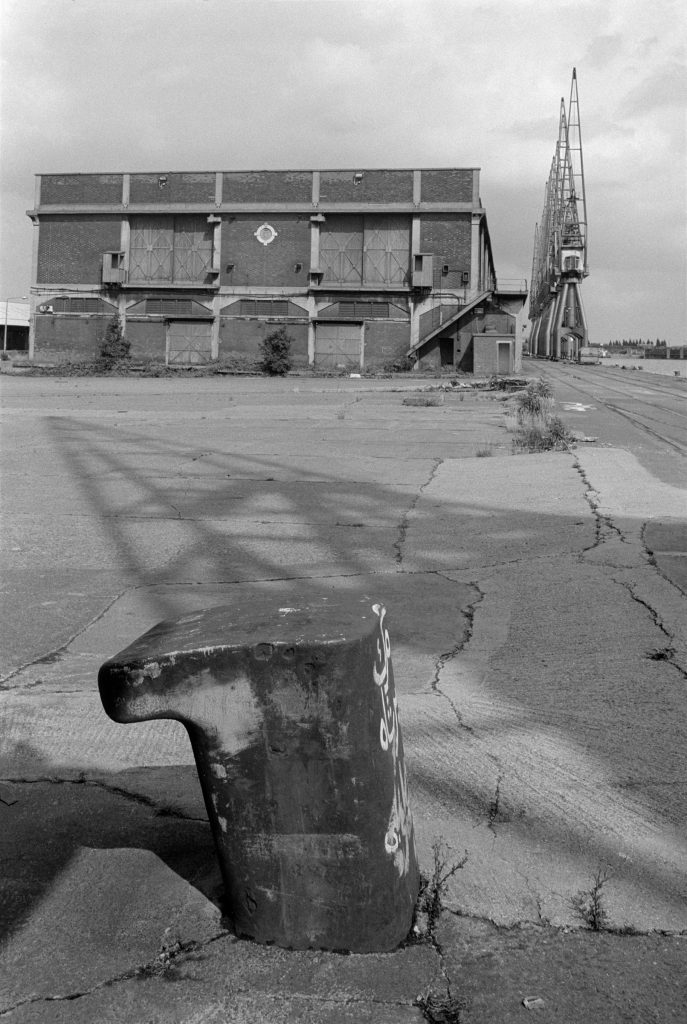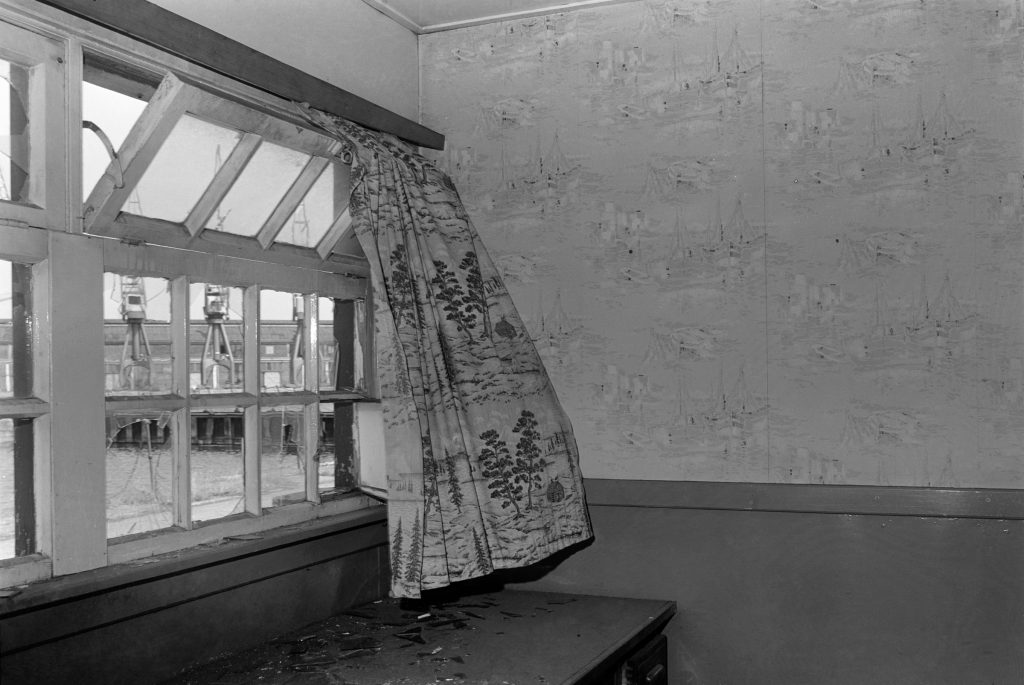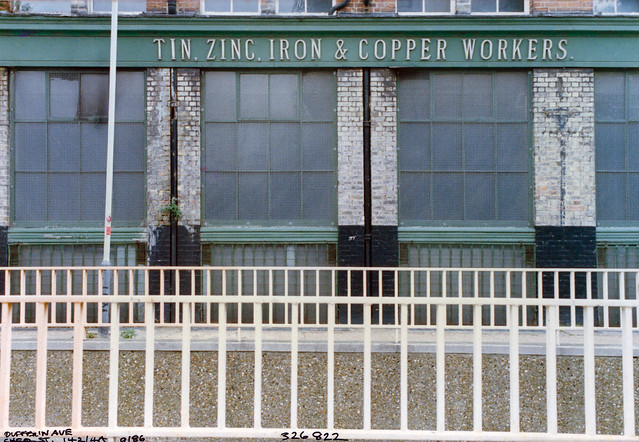I find to my surprise that it is very nearly seven years since I self-published my book ‘The Deserted Royals‘ and wrote a little about it here. Some of you who follow me on Facebook may have seen the rather wider range of pictures from that project made back in 1984 that I’m currently posting daily as my ‘story’ there, though I find Facebook particularly adept in hiding those posts I’d like to see and instead feeding me cats and celebs.
The ‘Royals’ in question are of course the Royal Docks, and most of my work was on the Royal Albert and King George V Docks in North Woolwich, by then part of the London Borough of Newham. I’d tried to photograph them from publicly accessible locations (with the usual mild bit of trespassing) but had found this very limiting, and wrote to the Port of London Authority who still owned these two docks, requesting permission to photograph them from the inside. Rather to my surprise they replied and granted me the access I’d requested. A similar letter to the owners of the Royal Victoria Dock went unanswered.
As well as the daily release on Facebook I will shortly be adding these pictures, along with others I took of London in 1984 to my Flickr album London 1984. At the moment it has pictures I took earlier in the year, including some from the West India Docks. I decided at the start of this year to put pictures on Flickr at a relatively high resolution and high quality and to trust any commercial users to respect my copyright and contact me to pay for usage. Although it’s almost certainly over-idealistic, I don’t think I’m likely to lose any significant income. I’ve used these larger images in this post and if you right click and open them in a new tab you can see them larger than in the post.
Here are a few of the pictures I’ve recently posted on Facebook, along with the usually short texts which accompany them, beginning below with an introductory picture and ending with today’s picture, about which I wrote a little more than usual.

84-7c-21.
I had obtained permission from the PLA to photograph inside the dock area they owned – the King George V and Royal Albert Docks two docks on two days, and made my first visit in July. The security men in the gate house were clearly surprised that anyone should want to come and take pictures, but not very interested in what I did. Once inside there was no security presence and I could wander freely on the south quay of the King George V dock and on the central peninsula between the two docks, though their was no access to the north side of Albert Dock.
I was not supposed to enter any of the buildings, which could be unsafe, but I did take a number of pictures through windows and doorways, and later did cautiously enter some of the smaller buildings that seemed safe. On my first visit I exposed around ten rolls of black and white film – 360 exposures as well as some colour transparencies over around six or seven hours of work.
Iason and Ion are the two ships which could be seen in the distance in some pictures posted earlier, at the west end of the north quay of the King George V dock. To the left is the dry or graving dock at the west end of the dock, full of water.

84-7e-63.
A bollard and a more substantial shed on the land between the two docks, now the runway for London City Airport, looking roughly east. The row of cranes is along the north side of the King George V Dock.

84-7l-53.
This was one of the few pictures, possibly the only picture, where I used flash to capture the curtain blowing in the wind and to balance the light inside the office with that outside. It was quite a pretty curtain, a landscape with trees and something of a Japanese feel, but it was the wall-paper that attracted me more with its groups of small fishing boats in front of a shore with what was probably meant to be a fortress but looked to me more like a cement works like those further down the Thames.
Obviously the scene outside the window with its cranes was vital to the picture, and balancing the light levels inside and outside was no simple matter. Nowadays modern cameras do this kind of thing automatically but back then it involved calculations using distance and the flash guide number, careful exposure measurements through the window and a great deal of luck. It was made more difficult by the slow flash sync speed of all SLR cameras of the time, limited by their focal plane shutters, in this case to 1/60th of a second. I think it was the first time I’d tried to do anything like this, though I had read about it in photographic magazines and I only took a single frame, so it was definitely a case of beginner’s luck
All photographs on this and my other sites, unless otherwise stated, are taken by and copyright of Peter Marshall, and are available for reproduction or can be bought as prints.








































